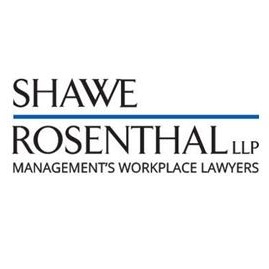The DOL Provides Guidance on Lactation Accommodations Under the New PUMP for Nursing Mothers Act
Congress recently enacted the Providing Urgent Maternal Protections for Nursing Mothers Act (“PUMP” Act), which expands existing lactation protections for nursing mothers under the Fair Labor Standards Act, as discussed in our December 2022 E-Update. Under the new law, employers are required to provide to nursing mothers a reasonable amount of break time and private space to express milk for up to one year after the child’s birth. The U.S. Department of Labor has now issued Frequently Asked Questions and updated its Fact Sheet on “pump” or lactation breaks.
The FAQs and the Fact Sheet make the following points:
- The PUMP Act takes effect on April 28, 2023. (Before that date, available remedies for violations of existing pump break protections may be limited).
- All employers covered by the FLSA are also subject to the new law. Businesses with fewer than 50 employees, however, may be exempt if they can show that compliance will impose an undue hardship. Undue hardship is determined by looking at the difficulty or expense of compliance in comparison to the employer’s size, financial resources, nature, or structure of its business.
- Most FLSA-covered employees are entitled to pump breaks as needed, regardless of exempt or non-exempt status (the current law applies only to non-exempt employees). There are exceptions for certain employees of airlines, railroads, and motorcoach carriers – but those employees may be protected under state or local laws.
- State and local laws may provide greater protections to breastfeeding employees. Some of these laws impose very specific location and notice requirements, for example.
- The private space may not be a bathroom, and it must be shielded from view and free from intrusion by coworkers or the public. The space can – but need not – be permanent, but it must be available when needed.
- The break time need not be paid, but if the employer provides paid break time generally, the nursing employee may use such breaks to pump. Any additional time required need not be paid. If the break is unpaid, the employee must be completely relieved from duty.
- Factors such as the location of the space and necessary actions, like pump setup, may affect the amount of break time needed.
- Teleworking employees are eligible for pump breaks. During such breaks, they must be free from observation by any employer-provided or required video system, including computer camera, security camera, or web conferencing platform.
- Employees are protected from retaliation for exercising rights under the law. An example of illegal retaliation offered by the DOL is a delivery driver employee who is transferred to a lower-paying job because her supervisor complains that her pump breaks are interfering with the delivery schedule.
- If there is a violation, the employee may file a complaint with the DOL’s Wage and Hour Division or file their own lawsuit in federal court.
- Remedies for violations may include employment, reinstatement, promotion, and the payment of wages lost and an additional equal amount as liquidated damages, compensatory damages and make-whole relief, such as economic losses that resulted from violations, and punitive damages where appropriate.







